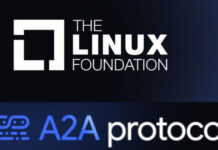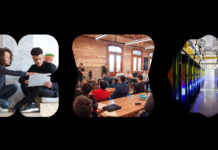Guest Post: Prof. Lorena Barba
Title: Q&A with Prof. John Mitchell
Originally posted at Open edX Universities.org

Stanford University president, John Hennessy, created the office of the Vice Provost for Online Learning (VPOL) in Summer 2012—dubbed “the year of the MOOC” by The New York Times—and tapped Prof. John Mitchell to lead it.
John Mitchell is a computer scientist with a long career of research in programming languages and computer security. He has worked on web security and privacy, tackling the difficult task of expressing nuanced privacy concerns into programmable algorithms. This work was covered by The Economist magazine in January 2007 (“The logic of privacy,” Science & Technology section).
In 2009, Mitchell and his students developed a web platform to support teaching and learning called CourseWare. It was used for early experiments with “flipped classroom” pedagogies and was a precursor to the MOOC platforms of today.
As Stanford’s VPOL, John Mitchell supported around 450 projects involving nearly 10% of all Stanford faculty (about 200 instructors). In late 2014, the VPOL office at Stanford was combined with Academic Computing, Classroom Technology, and the Center for Teaching and Learning, with Mitchell leading the larger group as Vice Provost for Teaching and Learning (VPTL).
Q&A
—Some years back, you worked on applying algorithms to questions of privacy. What of that research could you apply today to issues related to student privacy, in an increasingly data-driven education system?
Privacy issues get interesting when clear needs for data come in conflict with privacy risks. For example, medical data is vital for improving health care and tracking the spread of epidemics. But most of us as patients worry about the privacy of our medical conditions and hope for fair treatment from insurers and employers.
Data analysis offers huge potential for improving education, but data must be handled carefully for many reasons. Students want to feel safe to try something and fail, without being judged. And parents worry about how their children will be assessed from the data collected by schools or private companies supplying learning technology.
An immediate way to reduce privacy risks is applying the computer-security principle of not collecting data we don’t need. Cryptography reduces the privacy risks and ensures confidentiality for the data we do collect. So despite the challenges of handling education data, our field draws on experience with other kinds of data and has tools to tighten security.
—In an interview with The Stanford Daily, you said: “It’s easy to build a platform … But it’s another thing getting new teaching and learning ideas adopted across campus and engaging the faculty …” What did you do as VPOL to address the second aspect?
We asked two things of each proposal from faculty teams: (1) a clear educational benefit to Stanford students; (2) a well articulated research component that pushed the envelope by trying new pedagogical techniques. They needed to do more than simply record classroom lectures or break up standard lectures into smaller pieces. Once faculty got into the studio and looked at what they could produce, they became enthusiastic about restructuring their courses and engaging students in different ways.
—The public may know of the efforts Stanford has put in MOOCs, with Stanford Online hosting its own Open edX platform and more courses available through Coursera. But what can you tell us about the adoption of online and blended learning with Stanford students on campus?
Over 2012-2014, several projects developed material to use on campus first, then released some of it in a MOOC. We worked together with the faculty over several academic terms, revising and extending the materials and coming back often to the needs of Stanford students.
The more compelling stories happened when a professor came back from the MOOC to rework the course again, looking to support a “river and tributaries” model. Rather than giving students just a linear sequence of topics, these courses let students get interested in side issues and explore them. Or they can support those that need a refresher before starting a new section, providing that support online and on demand.
—Some watchers of the ed tech scene say that Stanford’s own open-source platform, Class2Go, was a better product than Open edX. Why did you decide to abandon development of Class2Go?
Thanks for the compliment. We had a great engineering team, led by two experienced industry professionals: Sef Kloninger and Jane Manning . They did a great job. But as our ambitions grew, we decided for the advantages of teaming up with others.
—You announced the partnership of Stanford with edX to develop the Open edX software in April 2013. What brought about this partnership?
We had developed Class2Go quickly, to experiment with different learning formats and to explore different pricing models and other options. But it’s a lot of work to develop a full-featured and reliable platform. It didn’t make sense to take that on alone, if there were other institutions with similar needs. I was happy that Anant Agarwal and edX as a whole were enlightened and delivered on their promise of open-sourcing their platform as we dropped Class2Go and devoted our modest engineering effort to the shared code base.
—Stanford is unique in its approach to embracing any platform that faculty want to use—with faculty posting on iTunes U, YouTube, EdNovo, Coursera, and Stanford Online. What is the rationale behind giving faculty such freedom?
We are looking at education far into the future. The format supported by Coursera can currently be effective for many courses. But NovoEd offers a different model that could have advantages for courses that include student projects. We are learning as we go, and it’s essential to try different approaches to see what works best.
I’d like to see every professor learn from what others have done, consult experts like our VPTL team who try to keep abreast of the latest ideas, and give their students the most valuable learning experiences. Digital technology is amazingly flexible and we want to take advantage of that.
—It seems that many new ideas in education are born in Stanford and then are widely adopted. Why do you think this is? And do you see any fresh new area that could be the next surprise development?
I’m proud to be at Stanford where we have some of the most creative, committed, and knowledgeable faculty in the world. We also have an entrepreneurial spirit on campus and enough confidence to try things that fail. But we are part of a broad academic community and there are great ideas cropping up everywhere.
We all try to understand what works best for our students. I think we will see video used more sparingly. It’s a great medium for giving a short explanation and capturing the enthusiasm of the professor. But students learn by doing, so we will build more ways for students to struggle with ideas on their own or in collaboration with others.
In another front, we are still trying to find the modern digital analog of the book. Professors write text books to share their knowledge and teaching methods with others but we haven’t quite figured out how to produce rich digital learning tools that work, across institutions and for instructors who teach different student populations. It’s a challenge but very exciting to face so many unknowns!
Learn more!
- Prof. Mitchell announcing the “Year of Learning” for academic year 2015–2016. Published on Sep 18, 2015
- At the #mediaX2015 Conference, Prof. Mitchell gives an overview of Stanford’s online-learning initiatives over the last few years. Published on Jun 4, 2015

 En Español
En Español



















